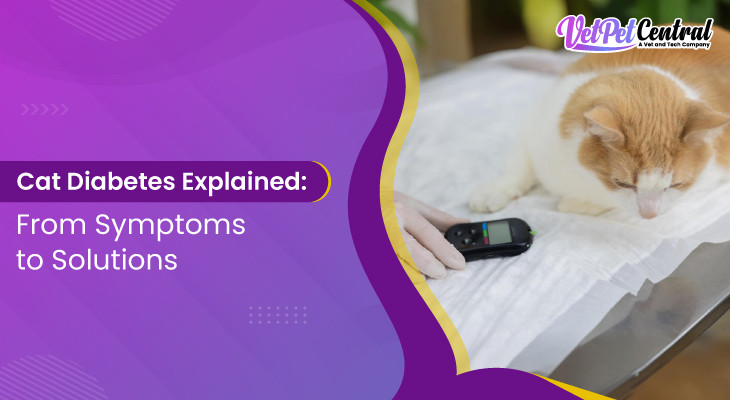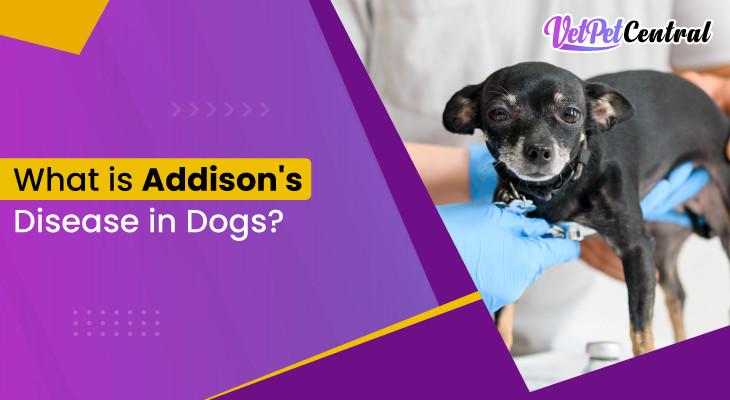How Do Cats Get Diabetes? Common Symptoms, Causes and Treatment
 Jun 03, 2025
Jun 03, 2025

Cats are the most decent yet jolly pets one can ever have in life.
However, their proper grooming and care require dedicated attention and emotional support.
As we humans are helpless against diabetes, cats are also prone to the disease, and this can slowly lead to death if not noticed and treated in time.
Abnormally elevated blood glucose levels commonly cause it because of insufficient insulin production or poor insulin sensitivity.
Due to growing cases of cat diabetes, it is important for any cat owner to know how cats get diabetes. Common signs? And the available treatment options.
This guide will focus on the common causes, signs that can be observed, and ways of handling the disease to ensure that the cat has the best treatment possible.
Common Symptoms of How Cats Get Diabetes?
It is important to recognize certain symptoms of diabetes as they appear in felines and necessitate medical help and proper control.
The following feline diabetes symptoms are commonly observed:
Excessive Water Consumption and Frequent Litter Box Visits
Cats who are affected by diabetes will also have a very high level of desire to drink water, which, in turn, leads to more frequent bathroom breaks.
Sudden Weight Loss
Despite increased apatite, diabetic cats might lose weight notably due to their impaired capacity to metabolize glucose; thus, they start metabolizing fat and muscle.
Increased Hunger
The initial clinical signs presented may include excessive thirst and hunger since the cells cannot utilize glucose; rather, the body desperately tries to find energy through increased food intake.
Lack of Energy
Lethargy is a common complaint in diabetic cats, which negatively impacts the general activity of the cat, and it loses interest in play and other activities it used to do actively.
Dull and Dirty Coat
Another sign exhibited by cats with diabetes is ear infections and unclean, greasy fur. It is common for your cat to lose fur or not groom itself properly, and their fur could seem dull, dirty, or even matted.
Cat Diabetes Diagnosing
After you know the true meaning of how do cats get diabetes, you will surely know the common symptoms.
The recognition of the symptoms mentioned above in your cat will enable you to immediately seek veterinarian intervention.
In this way, there is a greater chance of controlling diabetes at the initial level in your cat.
Perform the below Tests;
Blood Glucose Test
It is the primary test veterinarians perform when the cat is brought into the vet clinic or facility. This test monitors blood glucose levels to identify hyperglycemia.
Urinalysis
It is the most convenient way to detect glucose and ketones in the urine, which can confirm the presence of diabetes. High glucose levels in the urine (glucosuria) contribute to diabetes.
Fructosamine Test
This test assesses average blood glucose levels over the past few weeks. It provides a longer-term view of your cat’s blood sugar control. The high fructosamine levels indicate poor diabetes control.
Causes of Diabetes in Cats
Obesity
- Excess body weight can lead to insulin resistance
- Cat obesity increases the risk of developing diabetes
Genetic Predisposition
- Breeds like Burmese cats have a higher incidence of diabetes
Diet
- High-carbohydrate diets can contribute to insulin resistance
- Poor-quality cat food lacking in essential nutrients can exacerbate the risk
Age
- Middle-aged to older cats are more commonly diagnosed
- The risk increases as cats age due to changes in metabolism
Gender
- Male cats are more prone to diabetes compared to female cats
- Hormonal differences may contribute to this disparity
Hormonal Imbalances
- Conditions like hyperthyroidism can interfere with glucose regulation
- Hormonal imbalances can contribute to insulin resistance
Inactivity
- Lack of physical activity can lead to obesity and insulin resistance
- Active cats have a lower risk compared to sedentary ones
Treatment Options for Feline Diabetes
Managing diabetes in cats requires a comprehensive approach that includes:
Insulin Therapy
Most diabetic cats require daily insulin injections to regulate blood sugar levels. Your veterinarian will determine the appropriate type and dosage of insulin for your cat.
Weight Management
Maintaining a healthy weight through diet and exercise is crucial. Weight loss should be gradual and monitored by a veterinarian to avoid complications.
Regular Monitoring
Frequent blood glucose monitoring is essential to adjust insulin doses accurately. Your veterinarian may teach you how to check your cat’s blood sugar levels at home.
Dietary Management
A diet high in protein and low in carbohydrates can help manage diabetes. Your veterinarian may recommend specific diabetic cat food. Consistent meal times and portion control are also important.
Preventing Diabetes in Cats
When you understand how do cats get diabetes, then you will surely find ways to prevent your cat from diabetes. It depends on how much you are curious about your furry friend.
Below are potential measures that can reduce the risk;
- The main culprit is obesity and it can be dealt with through a balanced diet and regular exercise. Portion control and avoiding high-carbohydrate foods are key.
- Regular health check-ups can help detect early signs of diabetes and other health issues. Your veterinarian can guide you in maintaining your cat’s health.
- Another slow parameter that leads to cat diabetes if continues for longer is the use of excessive medication. These medications affect blood sugar levels and always discuss with your veterinarian, if long-term medication is necessary.
What Is a Sign of Severe Airway Obstruction in Diabetic Cats?
In diabetic cats, severe airway obstruction can be particularly concerning. And one should desperately monitor the signs of severe airway obstruction in their cat.
Sudden Breathing Difficulties
Rapid onset of labored breathing. This may be accompanied by wheezing or other unusual respiratory sounds.
Changes in Vocalization
Hoarseness or changes in meowing can indicate an issue with the airway. Your cat may sound different or have difficulty making sounds.
Extreme Fatigue
Inability to engage in normal activities due to breathing issues. The cat may appear weak and less responsive.
Open-mouth Breathing
An indication of severe respiratory distress. This is a serious sign and requires immediate veterinary attention.
To Conclude
Understanding the causes, symptoms, and treatments of diabetes in cats is vital for any cat owner.
By recognizing early signs, seeking prompt veterinary care, and adhering to a comprehensive treatment plan, you can ensure your diabetic cat leads a happy and healthy life.
VetPet Central can help you provide the better care your cat deserves.
We connect you to top veterinarians, animal hospitals, and veterinary practices to get online appointments and consultations on a single platform.
We aim to remove the gap between pet parents and animal health care professionals to make pet health more accessible.
FAQs
How do cats get diabetes?
Many reasons lead to cat diabetes, but the prime ones are obesity, genetics, age, pancreatitis, and long-term medication use.
What are the common symptoms of diabetes in cats?
Common symptoms include increased thirst, urination, weight loss, increased appetite, lethargy, and poor coat condition.
How is feline diabetes treated?
Treatment involves insulin therapy, dietary management, weight control, and regular blood glucose monitoring.




